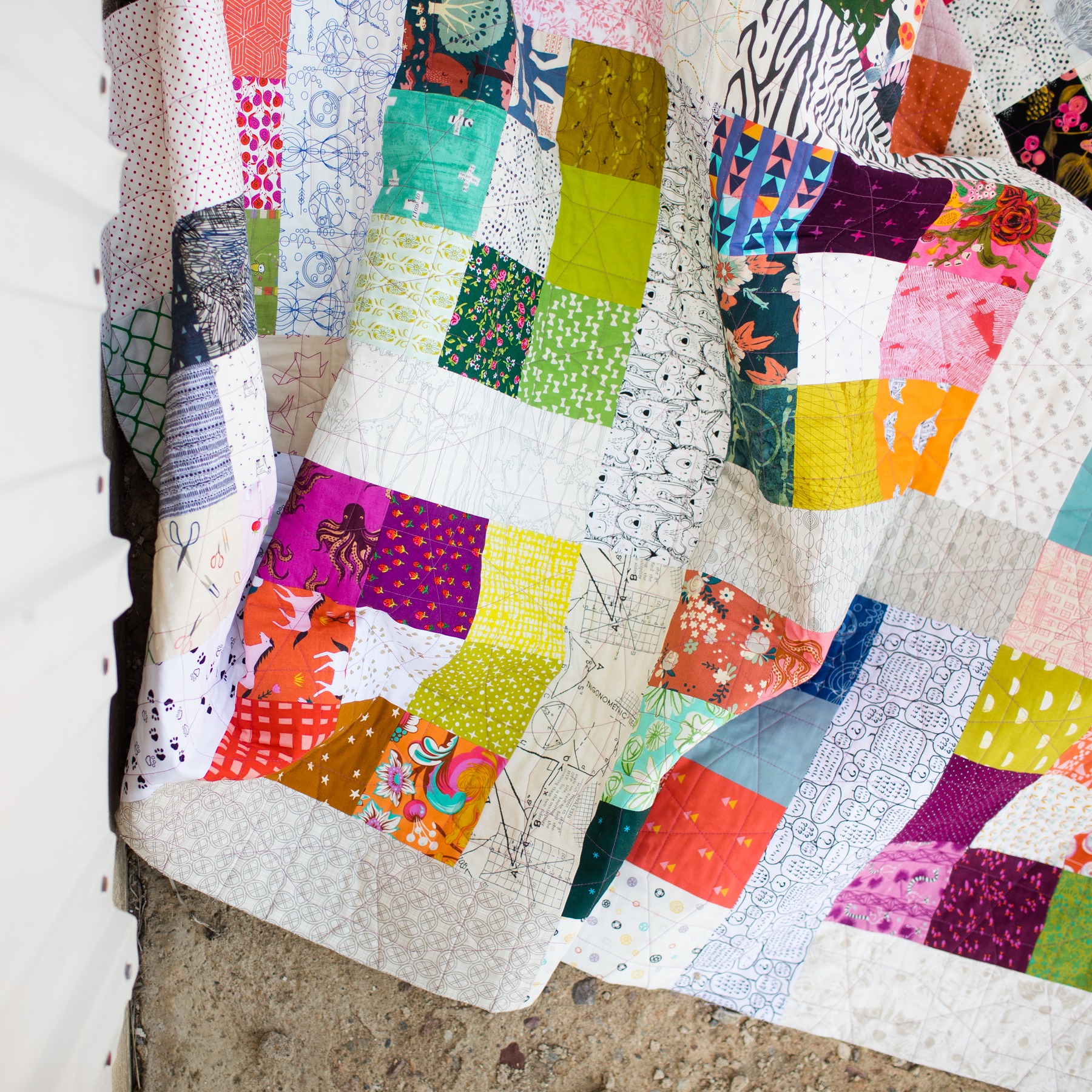
I love scrappy quilts! Admittedly, I make scrappy quilts but I’m not always using “scraps.” When I do have scraps I try to incorporate them back into my projects, but most of the time I am cutting from FQs or yardage. I get asked a lot what fabric I have used in a project but when it is scrappy I don’t always have an answer beyond, “as many as I can!” Here are the top 3 ways I like to pick my fabrics when I am going for that scrappy look.
1. Use multiple shades/tints/prints of the same color family.



My favorite way to apply this technique is when I am using Low Volume fabric (fabric that reads as light/white/bright). In my Cozy Nights cover quilt I used a pile of scraps from my low volume stash and just cut as many pieces as I needed using the total cutting requirements in the pattern instructions. Then, I mixed them up so that each block would have a combination of the different low volume prints.



I have also used this technique for other colors besides low volume. This works especially well if you don’t have enough of a certain fabric. Then you can fill in with other fabrics that are similar color and print, but not exact. You will get the scrappy look you are going for and it won’t look like a mistake or a difference in dye lot. My original improv Finger Paints quilt uses over 80 fabrics and the pattern only specifies 31 fabrics. When making a pattern like this if you want an scrappy looking quilt, just choose 2-3 fabrics to use for each fabric that is identified in the pattern.



2. Stick to a color harmony and apply different combinations within the harmony to each block in the quilt.
If you limit your color selections to a certain color harmony then you can apply any fabric that fits into that harmony throughout your quilt and everything will go together. I like to use this technique when I am making a block based quilt because I can keep each individual block consistent within itself but don’t need yards and yards to make all blocks out of the same fabrics. And since each block varies slightly, if you are short on just one or two fabrics it is easy to substitute something similar (using tip #1) and it won’t look terribly out of place because your overall quilt is scrappy.



My Fussy Rockies quilt uses a Rocky Mountain Puzzle block but I did not repeat any fabrics in the blocks. I decided on a low volume background, a fussy cut center, and HSTs and frame from a tertiary color harmony. Not every color of the harmony occurs in every block but sticking to the harmony makes the blocks look cohesive even though they are scrappy.



I have also used this tip on other projects, sticking to a specific color harmony keeps your scrap fabric pull organized and even when using a lot of scraps your quilt will look put together.
3. Go monochromatic or make a rainbow.
An easy answer to a scrappy quilt that looks good is to just make a monochromatic quilt. By keeping all your scraps within the same hue the quilt will go together by default. Your hue can even swing to the extremes, like making a quilt to include every color between yellow-green to blue-violet.



This might be hard to accomplish if you are trying to make a dent in your scrap stash and you don’t have a bunch of scraps in a single color. Another solution is to just put your scraps in rainbow order. This will organize your colors into blocks and create flow across your quilt. It doesn’t have to be a full rainbow. You can always go back to a color harmony and use a partial rainbow.



Bonus Tip. Everything but the kitchen sink!
If you really just love super scrappy quilts, you can always just throw everything you’ve got at the design wall. There doesn’t always have to be any organized way that you put fabric into a quilt, especially if you are just trying to use up scraps that you love. I have done this many time and some of these quilts are my most favorite. I usually end up seeing one of the scrappy tips emerge as I progress with the quilt. It’s a fun way to use your precious scraps!



If you want to learn more about color harmonies you can make a Color Study quilt. This pattern teaches lessons on 12 different types of harmonies using tables and graphics to make it easy to follow along. Once you master the harmonies and figure out what colors you are drawn to you can apply them to all of your future projects.
-
 Finger Paints PDF Quilt Pattern$15.00
Finger Paints PDF Quilt Pattern$15.00 -
 Color Study PDF Quilt Pattern$15.00
Color Study PDF Quilt Pattern$15.00 -
 Cozy Nights PDF Quilt Pattern$15.00
Cozy Nights PDF Quilt Pattern$15.00




